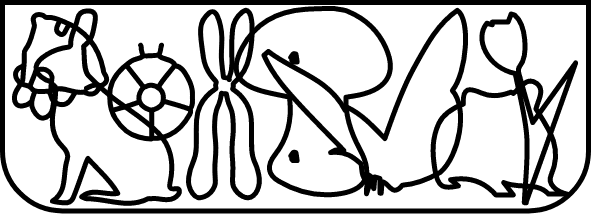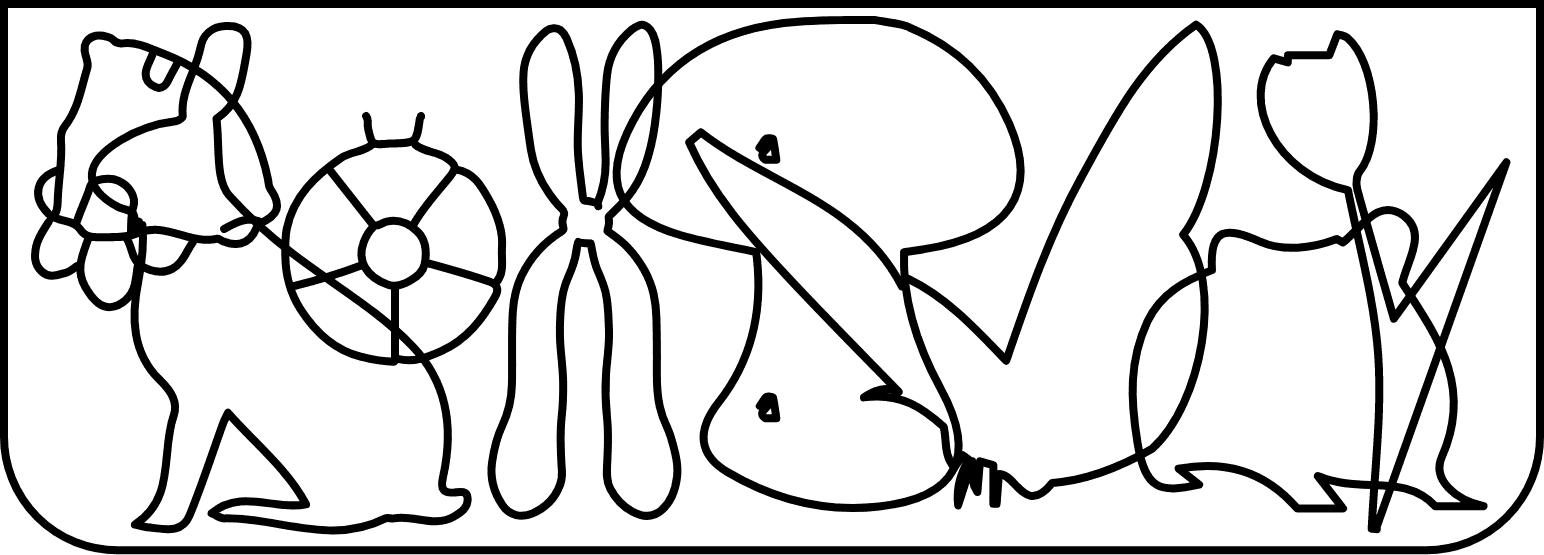
platform_as_a_curatorial_research_lab_for_independent_curators

curatorial practice
Autophagy: Eating in Its Destructive and Creative Nature
curator _ CHANG Eunha
✦
How can love of life coexist with love of violence?
How was this strange link between care and conquest forged?
- Jane Bennett,
Vibrant Matter: A Political Ecology of Things
✦
The curatorial project, Autophagy: Eating in Its Destructive and Creative Nature, is an experiment that takes the concept of 'autophagy'— a biological mechanism within the body—as a theoretical hypothesis as part of the larger curatorial project Inclusion and Innovation as Curatorial Practice: The 5 Inclusion Tactics for 7 Curators. Out of five given keywords: Cooperative, Empowering, Fair, Open, and Supportive, I selected 'empowering' to delve into. By combining this selected keyword with the concept of ‘autophagy’, the project explores the true nature of empowerment and what it means to truly empower someone or even the self.
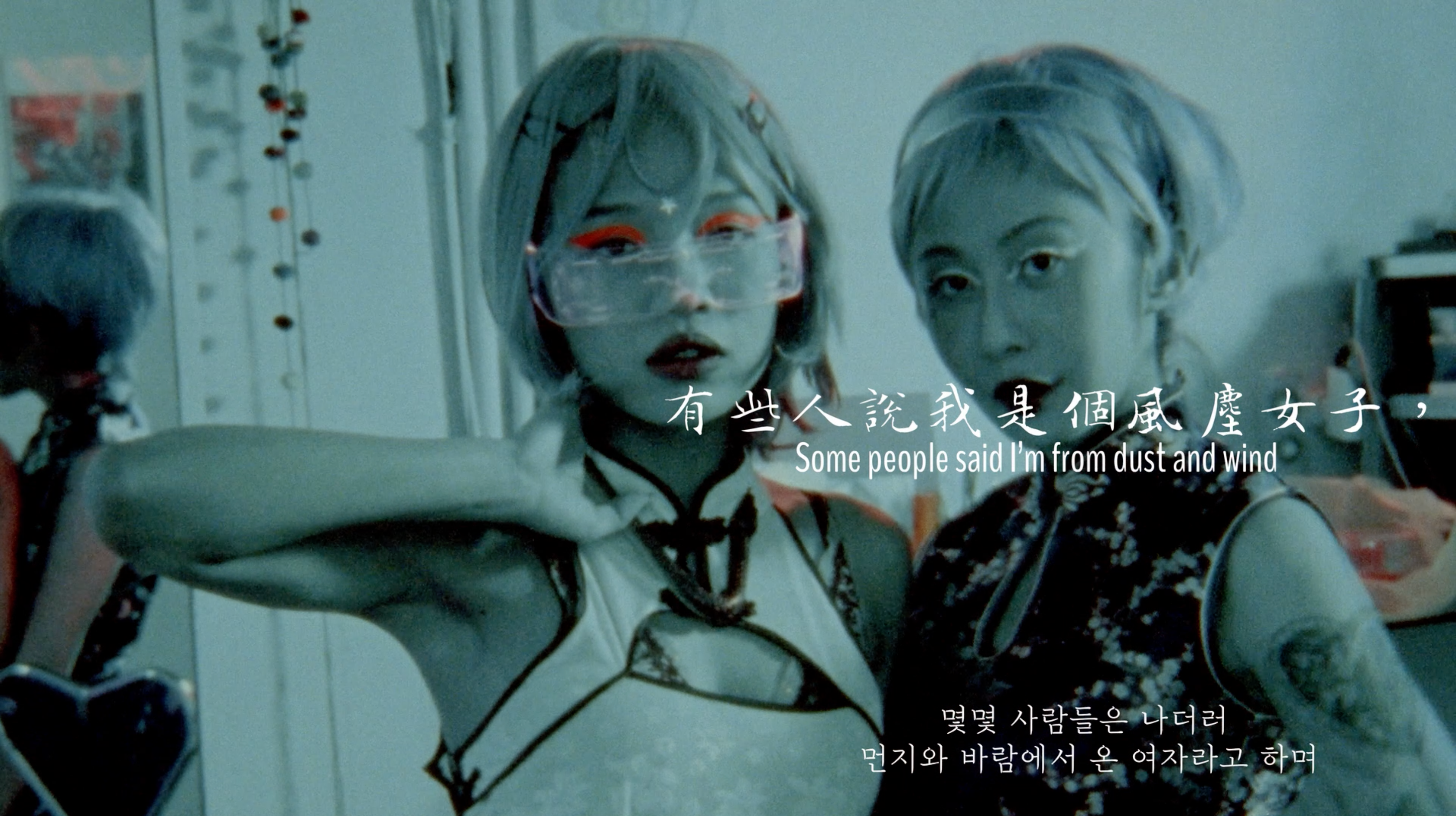
Mooni Perry, Binlang Xishi: chapter 2, 2021-2022, single-channel video, 16min 22sec (still).
The Dynamics between the One Who Empowers and the One Who Is Empowered
The definition of ‘empower’ in the Oxford Dictionary states the following: it describes the verb as "be empowered (to do something)" or “empower somebody (to do something) to give somebody more control over their own life or the situation they are in”, while the Merriam Webster's Dictionary defines the verb to empower "to authorise or delegate or give legal power to someone." This term is often used to motivate employees and increase their drive to work, as it is believed that employees who feel empowered are more productive and achieve better results. In this context, empowerment in terms of corporations, it is understood that empowering is a part of the corporate strategy to control and authorise power. It is also interpreted as 'the possession of formal authority or control over organisational resources.'1 It seems to focus ‘mainly on the concept of sharing authority'.2 As companies adopt the concept of empowerment as a way to motivate workers' energy levels and morale to contribute to the company, the fundamental question arises "Does sharing authority and resources with subordinates automatically empower them?".3
The notion of sharing power, authority, and resources within the existing system is a grandiose and utopian idea. This is because the definition and use of empowerment are based on the following precondition: the person empowering (empowering person), the person being empowered (empowered person) and a dichotomous hierarchical order. In addition, being able to grant authority also means that the authority of others can be deprived. In other words, the challenge with the concept of empowerment lies in its inherent assumption of a dichotomous hierarchical order.
This has been a topic of my examination in my master's thesis on Invasive Species and Sovereignty. I have been consistently questioning similar underlying issues related to empowerment. Specifically, I have been questioning ‘the dichotomy of the giver and the recipient of authority, the further deprivation of the authority of others, and the death of others ─ whether it is actively taking the life of another being, legal death, refusal to grant membership as a citizen, or latent death in political danger of facing death even if it is not an actively killed case ─, who has the authority to act?’ The main question is who has the authority to act and why should someone be killed? This question was initially posed by Ayesha Hameed, one of the juries of my dissertation, “Why should nation-states affirm their sovereignty at the biological level?” It has been developed and partially resolved in the paper.

Alaa Abu Asad, Japanese knotweed in blossom(right), 2022, Ghent.
Leaving aside some of the answers to the question of "why should nation-states assert their sovereignty at the biological level?" that can be inferred from the paper,4 I return to the following question: If the sovereignty of a nation-state is based on the geographical boundaries of its territories, it creates a clear definition of a "homeland" for certain species such as migratory birds, fish, and seeds that follow the seasons, currents, or flow of water or wind. However, what about species that are not connected to such physical matters? How do we define the home of beings that do not have a traditional "hometown" or "place"? And what about those who migrate for political and economic reasons, regardless of their will, to a "place" referred to as "their place"?
I have been weaving or unravelling the multiple histories and surroundings of these beings through mediators (species) called ‘invasive species' in order to answer the questions previously mentioned. I have taken a metaphorical approach to scrutinise these species, often alleged as dirty, "out of their place" and undesirable, or often attempted to be effaced. In this exhibition, this theme is manifested in works such as Mooni Perry's Binlang Xishi: chapter 2 (2021-2022) which features the symbol 'Binlang', Chulayarnnon Siriphol's ANG48 (2022), which appears the half-human, half-snail 'Angsumalin', and Alaa Abu Asad's essay, The dog chased its tail to bite it off (2022) that explores the invasive plant species 'Japanese Knotweed'. TJ Shin's 'Minjung' from Mugwort Along the Serpent’s Path (2023) is experimented on in this context. It is an experiment on geographical movement, those who are positioned within the hierarchy that is inevitably premised to be empowered by someone, and at the same time, it is proposed as an actor who escapes, liberates, and seeks an exit from the hierarchy and of another deployment assemblage.
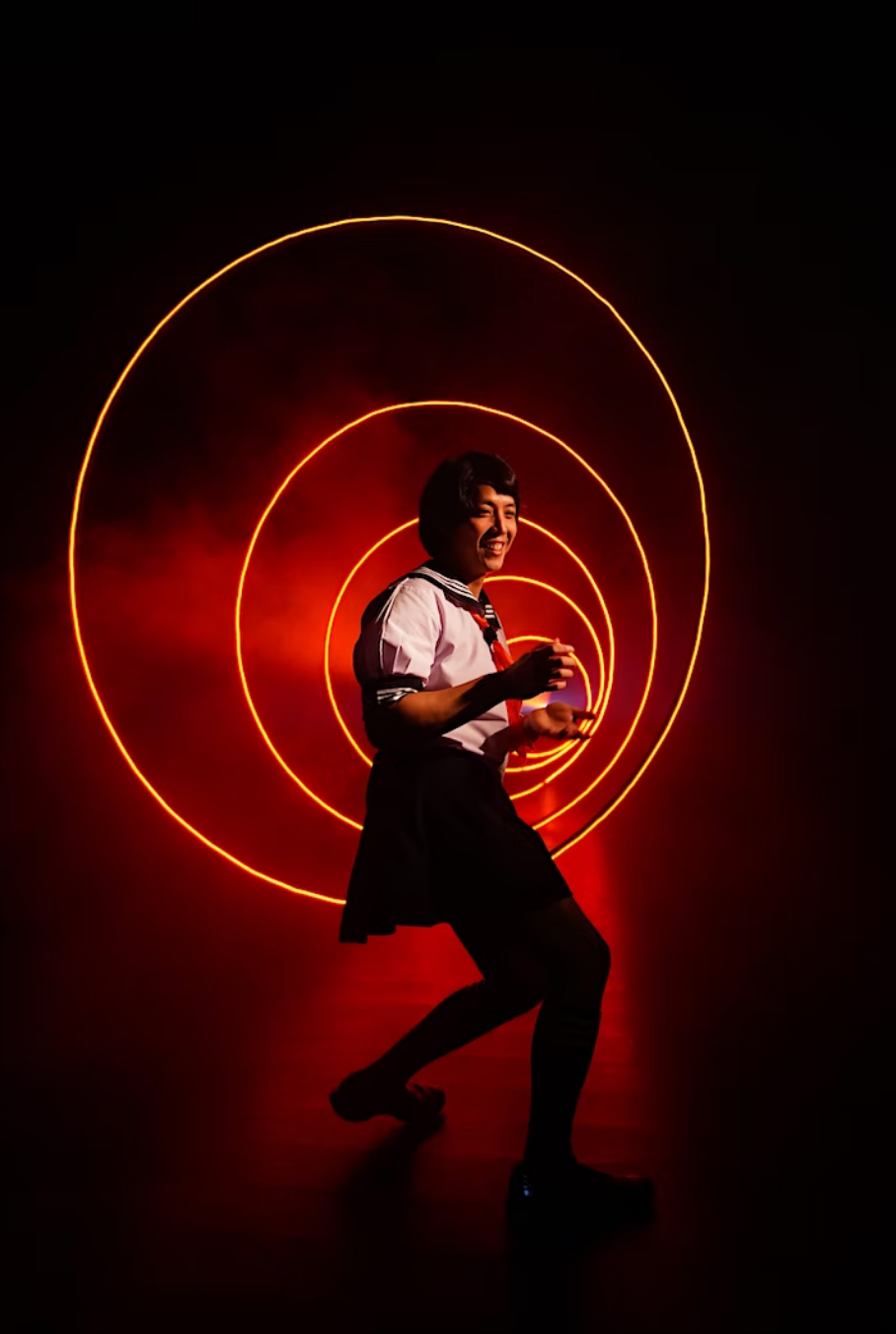
Chulayarnnon Siriphol, ANG48, 2022, single-channel HD video, 25 min. (still) Collection of the Artist and Bangkok CityCity Gallery, commissioned by The Jim Thompson Art Center, Thailand and Hong Gah Museum, Taiwan and Bangkok CityCity Gallery, Thailand. Photo by Jutarat Ninnaihin. Photo Courtesy of the artist and Bangkok CityCity Gallery.
Autophagy, Autopoiesis and Eating
Now, returning to the fundamental purpose of empowerment, rather than focusing on the inherent problems of empowerment. That is to say, the discussion shifts to the issue of individual autonomy and independence, which is the goal to be reached through the concept of empowerment. How can we foster the sovereignty and autonomy of each individual in a different way than the binary hierarchy of empowerment that we have tentatively considered? To answer this question, I would like to try to avoid the optimistic approach of empowering individuals with autonomy and cultivating a sense of ownership by others as described in the organisational management theory described above. Rather, I would like to explain 'autophagy' as a method or strategy to reach the goal that ‘empowering’ aims to reach by jumping over or traversing the general method of empowerment.
Autophagy comes from the Greek word auto-, "self", phagein, "to eat". Autophagy, called 'self-digestion', is a destruction mechanism that naturally decomposes unnecessary or nonfunctional cell components in the regulatory process.4 To provide more explicit details, I would like to introduce the concept of 'autopoiesis,' which was coined by Chilean biologists and philosophers Humberto Maturana and Francisco Javier Varela García. The definition of their autopoiesis organisation can be the basis for the conceptual approach of 'autophagy'. This term was created to reflect the idea that living beings have the power to sustain and regulate themselves. The theories of Umberto Maturana and Francisco Varella start from the search for the questions, ‘What is a living thing?’ and ‘Which one is alive?’ According to them, living things can be defined as a characteristic of continuously generating themselves, and organisms.5 If we look at organisms based on the concept, they are characterised by maintaining tissue structure through self-creation within the biological system. Also, production of their own components is used for self-maintenance. In other words, living things, one alive, can be said to be spontaneous and self-creative. These characteristics are attributes that we can associate with the process of autophagy. This is because autophagy is a mechanism that creates recycling of cellular components by eating unnecessary or dysfunctional components.
Then, how can organisms be sustained exactly? As touched upon earlier, it is accompanied by the act of ‘eating.’ Eating refers to the act of eating food and receiving nutrition. It is a fundamental aspect of human biology and is necessary for survival. Humans, like all animals, or even any other living creatures, need food as a source of energy and nutrients, and eating is an essential part of our daily lives. Furthermore, eating is not just interpreted as a biological need, but also a social and cultural activity, and how people eat can vary greatly depending on their cultural background, beliefs, and practices. In essence, eating is deeply tied to social and cultural norms and practices as a way for individuals and groups to assert their identities and relationships, and to negotiate and mediate their position in the world. Thus, eating is also a way for individuals and groups to exercise their own identity and control their own lives.
British anthropologist Mary Douglas argued that food taboos are often used in certain cultures to define what is considered "clean" and "pure" and what is considered "dirty" and "unclean."7
This concept posits that food taboos and other forms of food regulation affect women and reinforce gender inequality, and provide insight into the ways in which these practices are used to control and enslave women. In this same vein, some feminists have argued that food taboos and other forms of food regulation are often used to control women's bodies and behaviours while also reinforcing traditional gender roles and power dynamics. For example, in some cultures, women may be expected to follow stricter food taboos and dietary restrictions than men and may be punished or stigmatised if they break these rules. In other words, the act of eating can be understood not only as a way for individuals to explore and respond to their environment directly, but also it can be seen as a way for individuals to explore and examine their position socially, politically or hierarchically.
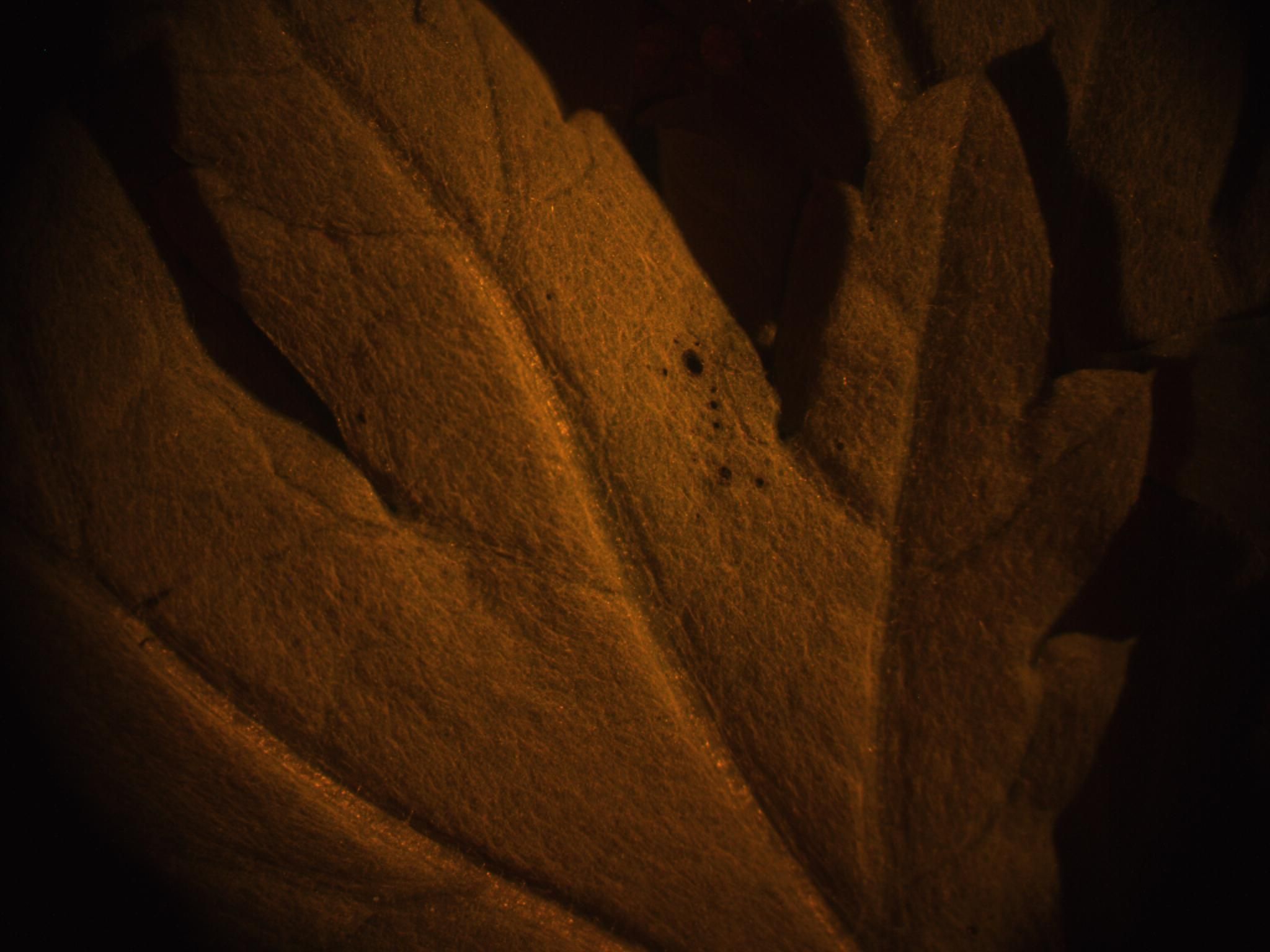
TJ Shin, Series from Untitled (Self-Portrait), 2021, digital print from microscope scans.
Beyond Binary Hierarchies: Autophagy as a Strategy for Empowerment
So how exactly can the concepts of 'autophagy' and 'eating' be elaborated within the framework of 'empowering'? As outlined before, the word autophagy comes from the Greek words auto-, meaning 'self' and phagein, meaning 'to eat'. Thus, autophagy means "eating oneself" and is also called self-digestion. It is a natural and regulated mechanism of cells to remove unnecessary or nonfunctional components. Apart from its many functions, autophagy plays an important role in cellular homeostasis by removing larger protein complexes and worn organs. As discussed earlier, the act of eating is a powerful tool that individuals and groups can use to exercise their own identity and control their lives. In a similar way, the process of autophagy can be seen as a way for the body to exercise its own identity and control its own life. The concept of autophagy, that is, the process by which a cell "eats" or decomposes its own cellular components, can be drawn as an extension of the concept of "eating" in two aspects.
Autophagy, the process of self-digestion, can be understood as a strategy for promoting individual autonomy and independence. At the cellular level, autophagy allows cells to degrade and recycle their own components, thereby exerting control over their own lives and asserting their own identity within the larger organism. This process can be seen as a form of self-determination, as cells actively shape their own internal structure in order to support growth and development. Michel Foucault says in Techniques de soi, “Self is a reflexive pronoun, and it has two meanings. Auto means "the same," but it also conveys the notion of identity. The latter meaning shifts the question from "What is this self?" to "What is the plateau on which I shall find my identity?””8 In this context, autophagy can be understood as a method and a foundation for finding my identity through self-determination. In other words, autophagy is a way of "eating" their own internal structure in order to recycle and reuse materials such as cells, which can be seen as a form of self-capacity and self-determination. Autophagy, in turn, is a way of "eating" their own internal structure in order to recycle and reuse materials such as cells, which can be seen as a form of self-capacity and self-determination.
In addition to exercising autonomy, autophagy can also be seen as a way in which cells challenge and subvert existing power structures and social norms within an organism. For example, the process of autophagy allows cells to break down and recycle old or damaged components and create new, healthy components. In this way, the process of autophagy allows cells to challenge and subvert existing power structures and social norms within an organism that dictate what is considered "good" or "bad" and "valuable" or "unworthy". The process of autophagy can be related to the concept of 'eating' as a way for cells to exercise their identity and control their lives and how cells challenge and subvert existing power structures and social norms within an organism. By engaging in the process of autophagy, cells can support their own growth and development, plus they can create new possibilities and alternatives for building themselves and larger organisms, organisations, and worlds.
✦
As we have explored the link between autophagy and empowerment, we have come to understand that just like how autophagy allows cells to eat, destroy, recycle and create using unnecessary or dysfunctional components, it is important for us to embrace and transform our own wounds, conflicts, and discordances. Even if our own wounds, conflicts, and discordances are considered of little value, it can have an impact through a process of ‘autophagy’. To conclude, rather than solely focusing on the binary hierarchy of empowerment, ‘autophagy’ enables us to pay attention to the subtleties, diversity and wonders of life that surround us, and truly understand and appreciate the beauty and complexity of the world we inhabit. The presented artworks by four artists ─ Alaa Abu Asad, Mooni Perry, TJ Shin and Chulayarnnon Siriphol serve as a means of escaping the constraints of societal hierarchies and the deployment of new perspectives and understanding, highlighting the journey towards true empowerment. They also may be the embodiment of a guiding light, illuminating the path towards a deeper understanding of not only empowerment but also the world while reflecting back to us the inner workings of our souls.
1. Jay A. Conger and Rabindra N. Kanungo, 'The Empowerment Process: Integrating Theory and Practice', The Academy of Management Review 13, no. 3 (July 1988): 471–82. https://doi.org/10.2307/258093. 473.
2. Ibid, 473.
3. Ibid, 473.
4. Eunha Chang, “Invasive Species and Sovereignty: Japanese Knotweed in the United Kingdom through Cooking Sections” (Master's dissertation., Goldsmiths, University of London, 2021).
5. Kobayashi S. "Choose Delicately and Reuse Adequately: The Newly Revealed Process of Autophagy." Biological & Pharmaceutical Bulletin 38, no. 8 (2015): 1098–103. doi:10.1248/bpb.b15-00096. PMID 26235572.
6. Umberto Maturana and Francisco Varella, Der Baum der Erkenntnis, Translated by Choi Hoyoung, Seoul: Galmuri, 2007, 56.
7. Mary Douglas, Purity and Danger: An Analysis of Concept of Pollution and Taboo , Routledge Classics (London ; New York: Routledge, 2005), 37-41.
8. Michel Foucault, Techniques de soi, translated by Lee Heewon, Seoul: Dongmunseon, 2020, 48-49.
Eunha CHANG (b. 1990, South Korea) is a curator and researcher based in Seoul, working between contemporary art theory and ecology. She has recently graduated with distinction from an MA in Contemporary Art Theory at Goldsmiths, University of London. She has worked as a director, curator, programme coordinator in various projects across Europe and Asia. She curated two curatorial projects: Invasive Species Behind the Notoriety: Multi-directional Narratives for Abundant Futures (Gwangju, 2021); Portals, Teleportation (Seoul and Istanbul, 2021). She is working as a coordinator for Scoring the Words (2022) in the Exhibition Division at Seoul Museum of Art, and assisting in their International Exchange Team. She has over 4 years international art and professional experience across a range of world-renowned art institutions including Istanbul Biennial, National Museum of Modern and Contemporary Art, Korea and Gwangju Design Biennale. Chang served as a curatorial assistant for the Asia Project, contributing to Looking for Another Family (2020), Catastrophe and Recovery (2021), and Nam June Paik Archive (working title) at the National Museum of Modern and Contemporary Art. She completed an internship in The Seventh Continent (2019) at the Istanbul Biennial fully funded by the Ministry of Culture, Sports and Tourism of the Republic of Korea.





